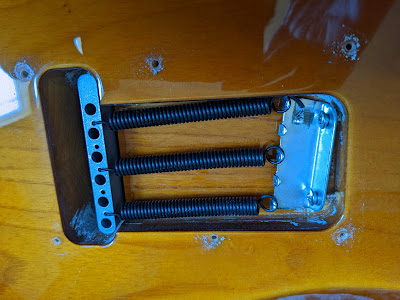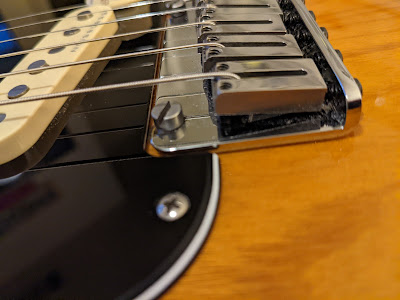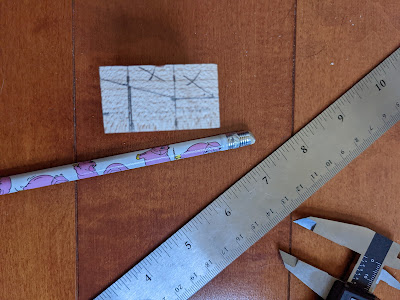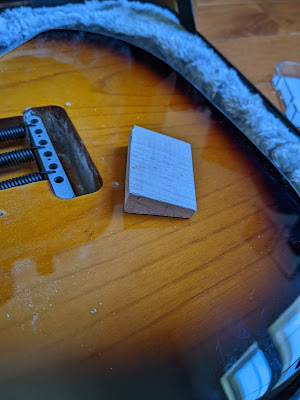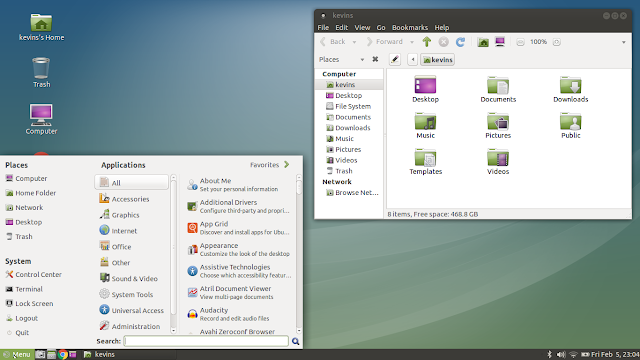Here's a quick project where I blocked the tremolo (whammy bar) on a Stratocaster using basic tools.
This will lock the tremolo in place, which generally should improve tuning stability and sustain. It's also easily reversible. (With a floating bridge, bending a string will detune all other strings).
The basic idea of this mod is to cut a wedge of wood to fit inside the tremolo cavity.
Supplies used:
- A piece of hardwood, such as maple or ash
- Philips screwdriver
- note cards
- Ruler (or calipers)
- Coping saw
- Belt sander (and gloves)
- Workbench/vice
Step 1. "Deck" the tremolo.
Tighten the screws on the springs so that the bridge sits flat on the guitar body. Loosen the strings while making adjustments on the screws. Ideally you need just enough tension to counteract the string tension (where still it's possible to drop pitch). Avoid using excessive string tension, which could indent the wood over time.
It's curious that the springs were angled when I took off the back plate. I would think parallel would be more stable.
Also, lower the two screws on the top of the bridge. A decked bridge will lay flat against the body.
For example in my case the measurements were roughly:
- 1.6 cm thickness at 1.5 cm
- 1.1 cm thickness at 3 cm
- Total length 3.8 total length
After marking out the shape on the wood (on all sides), you can double check the measurements by again forming a temporary shim from the stack of note cards, aligned with the cut lines.
Step 3. I rough-cut the shape with a coping saw and finished a simple wedge shape on a belt sander.
Step 4. Test the fit of the shape, rocking it into place for a snug fit, or sanding for adjustments.
You can leave the back plate off, in case you want easily remove the block and raise the bridge screws a hair. Since the tremolo is decked, it can still be used to drop the pitch of the strings.
Here's a recording using the Stratocaster (on both rhythm and lead parts):
